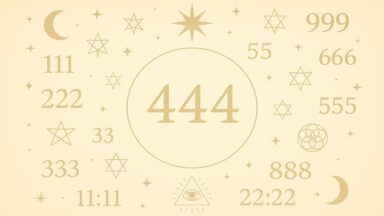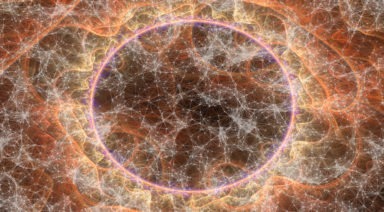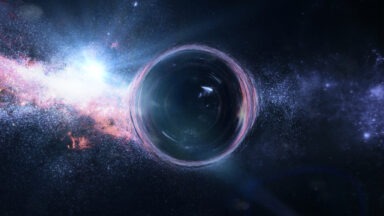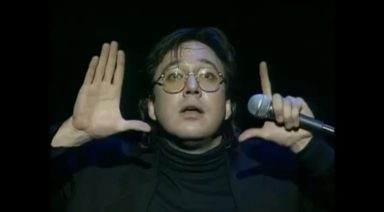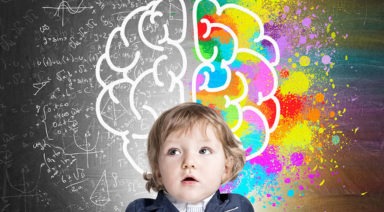Could Stars Be Conscious?

Panpsychism is the theory that there is a pervasive consciousness throughout the universe down to molecular and subatomic levels.
If you told a Zen Buddhist or Hindu devotee that you’ve discovered evidence of the possibility that the universe is conscious, they might thank you for pointing out the obvious. But for scientists, whose intractable studies are grounded in materialism and who often refuse to entertain the ethereal or intangible, finding potential evidence of such a concept would be groundbreaking.
There are, however, a handful of physicists who have developed theories positing that there is an all-pervasive field of consciousness throughout the universe. Our level of consciousness is obviously different from that of a dog or other animal, but could all matter be conscious? Could plants and trees be conscious? What about stars? Panpsychism may be the answer to those questions.
The Hard Problem of Consciousness
Panpsychism is the idea that everything that is material has a certain level of consciousness. Everything down to subatomic particles has a relative level that is different from the consciousness that we experience, but nonetheless consciousness.
Traditional science might find an idea like this to be implausible, but philosophical proponents like David Chalmers, point out that typically science will tell you how something acts, not how something is. The intrinsic nature or characteristics of matter are not of concern if they can describe their behavior.
And it is from this existential curiosity that Chalmers has formulated his view. He sees consciousness existing at two levels of experience, macro, and micro. We only have macro experience but the micro level is a building block for our macro experience.
This led Chalmers to formulate his theory of the hard problem of consciousness which is proof negating materialism. He sees the qualia or subjective nature of experience as conflicting with the materialist view. Essentially, he says that if there is a microphysical world devoid of consciousness, then the world involving consciousness would demand a separate set of properties, different than the laws of physics.
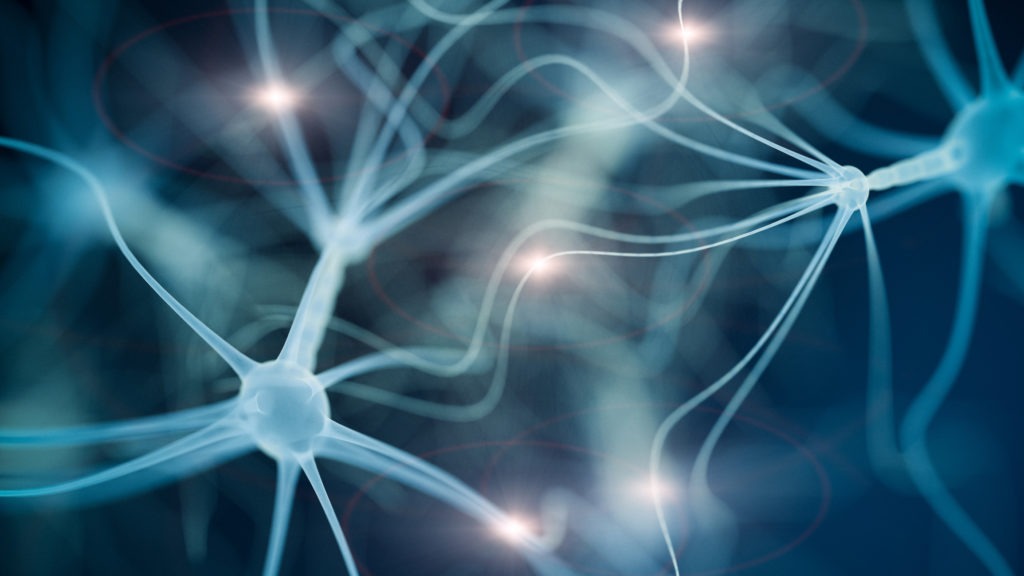
Stellar Consciousness
Why do stars on the outskirts of the Milky Way sometimes move faster than those closer to the center? Because they’re consciously doing so, says Gregory Matloff, a former NASA rocket propulsion scientist. For some reason, there are multiple instances of stars moving faster than they should and defying the predictions of physics like Kepler’s orbit.
Much like the idea that a field of pervasive energy exists in the quantum vacuum, there could be an infinite, pervasive field of consciousness. That energy from the quantum vacuum, or zero-point energy, could be hypothetically accessed with a machine that utilizes the Casimir effect, which relies on vacuum fluctuations to transfer energy.
Much like the quantum vacuum, Matloff says that there could be a universal field that transfers consciousness to matter through the Casimir effect’s vacuum fluctuations.
He refers to this field of consciousness as proto-consciousness. Our level of consciousness comes from factors of proto-consciousness, which is much like the micro experience being the building blocks to macro experience. Inanimate objects and organisms that we don’t consider to be conscious, could have these lower level, proto-conscious building blocks from the molecules and particles that they are made of. These elements are basic systems compared to us. In humans’ complex systems, our level of consciousness can be considered a standard feature.
So, stars are extracting sentience through some sort of osmotic process with a quantum field of consciousness? As abstract as it might sound, there is evidence that potentially hints at just that.
Matloff uncovered research from a Russian scientist named Pavel Paranego, who discovered that cooler, less massive stars circled the galaxy faster than their larger counterparts. Oddly, those stars on the outer rim of the galaxy that move faster than they should, are smaller stars with less energy.
One theory of stellar consciousness states that consciousness would likely be found in the upper layers of a star. It is in the upper sheath, or photosphere, of smaller, cooler stars where molecules can be found. Scientists call this a molecular stellar signature or molecular spectra. Larger stars are too hot to have molecules in their outer layers.
Does this mean the cool stars have a molecular layer of consciousness giving them stellar volition? Matloff says he believes so. And didn’t Carl Sagan say something about us being made of star-stuff?
A more sci-fi explanation that Matloff entertains is that these stars could be moving faster due to an advanced civilization controlling it. On the Kardashev scale, a type II, stellar civilization or higher would inevitably build a Dyson sphere around a star to harness its energy. At this point that civilization would be able to move the star or influence its movement. Matloff thinks this is unlikely, though.
It’s hard to say whether a universal consciousness exists, or whether we’ll ever be able to tell, but those who have conceived of it provide compelling theoretical and philosophical evidence. Apollo 14 astronaut Edgar Mitchell, the sixth man to walk on the moon, had the realization that we live in a “universe of consciousness.”
And other astronauts, upon returning from space, have experienced similar epiphanies of a feeling of ubiquitous connectivity due to consciousness. Certainly, the subjective nature of our perception and awareness is distinct and something to be explored. If there is such a field, how might we tap into it and could it be used to achieve higher levels of consciousness?
What Are Indigo Children and How to Identify Them?

Indigo children are often described as extraordinary beings with a powerful spiritual mission. Connected to the new age movement, the concept of indigo children suggests that these unique human beings come into the world with deep intuition, psychic abilities, and a strong sense of purpose. Many believe they are old souls destined to help humanity transform outdated systems and move toward a higher state of consciousness.
Table of Contents
- What Are Indigo Children?
- History and Origin of the Concept
- Indigo Child Signs and Traits
- Types of Indigo Children
- Challenges and Common Issues of Indigo Children
- How to Identify an Indigo Child
- Indigo, Crystal, Rainbow, and Diamond Children Differences
- FAQs About Indigo Children
What Is an Indigo Child?
An indigo child is a spiritually gifted member of a new generation, often described as strong-willed, empathetic, and deeply intuitive. The term comes from the belief that many are born with an indigo aura, linked to the third eye chakra, wisdom, and spiritual insight. Indigos are thought to possess intuitive abilities, creativity, and an inner drive to challenge unjust systems. Seen as old souls on a spiritual journey, they are viewed as visionaries who resist conformity, promote justice, and represent a broader shift in consciousness.
History and Origin of the Concept
The term “indigo child” was first introduced by Nancy Ann Tappe, a parapsychologist and synesthete, in the 1970s. Tappe observed that some children seemed to have a predominant indigo-blue aura, which she associated with a new spiritual frequency. She linked this aura color to unique qualities such as adaptability, intuition, and psychic abilities.
In the 1990s, authors Lee Carroll and Jan Tober further popularized the idea through their books, which described specific indigo children traits such as hyperactivity, sensitivity, and resistance to authority. They positioned indigos as a new generation of human beings sent to help dismantle outdated structures and lead society into greater awareness.
Since then, the concept has grown beyond indigos to include crystal children, rainbow children, and later diamond children — each wave carrying new gifts and missions in humanity’s spiritual evolution.
Indigo Child Signs and Traits
The following indigo child signs are most often cited:
Core Traits
- Spiritually inclined: A deep connection to higher purpose and awareness.
- Empathy and sensitivity: Feel the emotions of others strongly, sometimes too intensely.
- Strong-willed: Naturally rebellious, they resist blind conformity and question unjust authority.
- Creativity and intuition: Artistic talents linked to intuitive abilities, dreams, or even clairvoyance.
- Justice-driven: A deep need for fairness, often drawn to activism or causes.
- Bond with the natural world: An affinity with animals, plants, and the earth itself.
Behavioral Patterns
- Agents of change: Frequently advocate for social justice, environmental protection, and human rights.
- Sense of not belonging: Often feel different or isolated from peers.
- Intense energy: Can be misdiagnosed with ADHD, autism, or labeled as hyperactive. Many were placed on Ritalin in childhood.
- Academic struggles: Difficulty with rigid school systems; prefer experiential or creative learning.
- Adventurous: Love exploring new places, ideas, and cultural experiences.
Physical Traits
While less emphasized than personality, some believe indigo child physical traits include:
- Piercing or unusually intense eyes
- A vibrant indigo aura
- High energy or physical sensitivity to food, chemicals, or environments
Types of Indigo Children
Spiritual teachers often describe four main types of indigo children, each with its own strengths:
- Humanists: Compassionate helpers drawn to health, education, or social service.
- Artists: Creative innovators who express truth and inspire transformation.
- Conceptuals: Analytical and system-focused, seeking to rebuild outdated structures.
- Interdimensionals: Spiritually advanced, with profound psychic abilities, able to act as bridges between realms.
Each type of indigo child expresses the same mission — guiding humanity forward — in different ways.
Challenges and Common Issues of Indigo Children
The very traits that make indigos unique also present challenges:
- Authority conflicts: Their rebellious, independent spirit often creates tension with parents, teachers, or institutions.
- Emotional overwhelm: High empathy can lead to anxiety, depression, or physical symptoms like headaches or digestive issues.
- Misdiagnoses: Many indigo children have been labeled as autistic, ADHD, or dealing with other mental health conditions.
- Isolation: Their sense of being different can result in loneliness or feeling misunderstood.
These struggles highlight the importance of emotional support and environments that nurture their adaptability, creativity, and inner gifts.
How to Identify an Indigo Child
Recognizing an indigo child involves observing both behavior and energy. Signs include:
- Questioning rules and refusing to accept “because I said so” as an answer.
- Deep empathy, often sensing what others feel without being told.
- A strong sense of purpose and a conviction they are “meant for something more.”
- Interest in humanitarian causes, spirituality, or the natural world from an early age.
Some parents find that traditional personality tests don’t capture their indigo child’s unique worldview. Supporting their creativity, independence, and spiritual journey is key.
Indigo, Crystal, Rainbow, and Diamond Children Differences
Many in the new age community view indigo, crystal, rainbow, and diamond children as part of an ongoing spiritual evolution. Each generation is said to embody distinct traits, energies, and missions that reflect humanity’s gradual awakening.
- Indigo Children: The first wave, indigo children emerged in greater numbers in the 1970s. Known for being strong-willed, independent, and often rebellious, they are considered spiritual warriors whose purpose is to break down outdated systems. Their questioning of authority, passion for justice, and drive to challenge hypocrisy set the stage for the generations that followed.
- Crystal Children: The next wave, crystal children, began appearing in the 1990s. In contrast to the fiery indigo energy, crystals are described as gentle, peaceful, and deeply connected to love and healing. With large, expressive eyes and calm auras, they are thought to embody harmony and compassion, often bringing balance to families and communities destabilized by indigo intensity.
- Rainbow Children: Born primarily after 2000, rainbow children are often described as joyful, adaptable, and highly creative. Their energy is light and vibrant, and they are said to be natural forgivers, unafraid to love unconditionally. Rainbows often demonstrate a playful spirit, with strong intuitive abilities and an openness to the natural world. They act as bridges between past generations and future possibilities, embodying resilience and optimism.
- Diamond Children: The newest generation, diamond children, are believed to have begun arriving around 2008. Often described as visionaries, they are said to carry an innate ability to manifest their desires and shape reality. With advanced psychic abilities and deep spiritual awareness, diamonds are seen as teachers and guides for humanity’s next leap in consciousness, embodying clarity, truth, and a higher vibration of energy.
Together, these four groups are often seen as phases of spiritual awakening across generations: indigos clear the path, crystals bring healing, rainbows spread joy and adaptability, and diamonds offer vision and manifestation for the future.
The idea of indigo children has fascinated and inspired spiritual seekers for decades. Whether understood as old souls with a cosmic mission or as sensitive, gifted individuals navigating a complex modern world, they embody humanity’s potential for profound transformation.
By recognizing their signs, supporting their challenges, and honoring their place alongside crystal and rainbow children, we can help indigos fulfill their purpose. In doing so, they remind us of the enduring power of compassion, intuition, and a collective spiritual journey toward higher consciousness.
FAQs About Indigo Children
What is the meaning of indigo child in astrology?
In astrology, the indigo child meaning connects to planetary alignments suggesting higher awareness, adaptability, and psychic gifts. Indigo is linked to the third eye chakra, symbolizing insight and wisdom.
Are indigo children still being born?
Yes. Many believe indigos continue to be born, though newer generations — crystal children, rainbow children, and diamond children — have since emerged.
What does indigo mean spiritually?
Spiritually, indigo is the color of intuition, awareness, and truth. It is often linked to the third eye chakra and is associated with wisdom, spiritual insight, and deep connection.
What comes after indigo children?
After indigos came the crystal, rainbow, and diamond generations, each carrying new missions to further humanity’s spiritual growth.
How to parent an indigo child?
Parenting requires patience and flexibility. Support their creativity, encourage their empathy, and avoid rigid systems. Provide outlets for their hyperactivity and recognize their unique gifts rather than trying to “fix” them.







